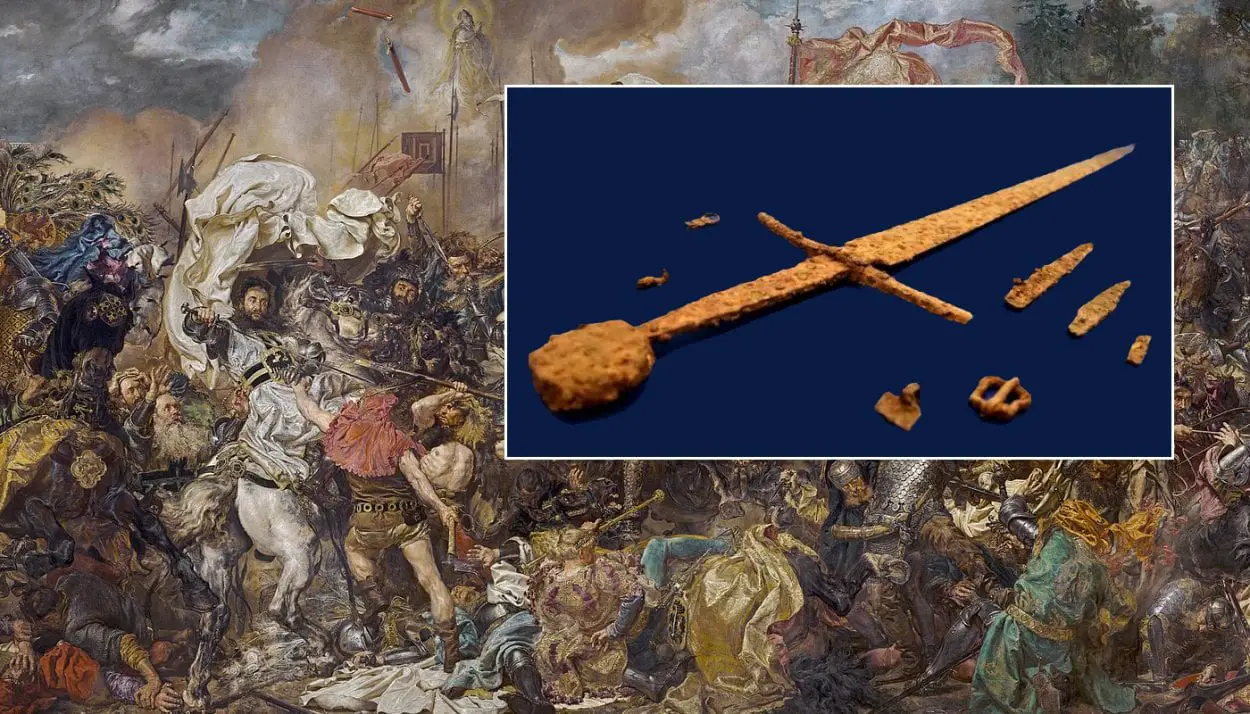A metal detectorist has found an arsenal of weapons from a Knight, that may have fought in the Battle of Grunwald.
The Battle of Grunwald, also called the Battle of Žalgiris, or First Battle of Tannenberg, was one of the largest battles recorded in medieval Europe during the Polish–Lithuanian–Teutonic War on the 15th of July in 1410.
The battle took place in the territory of the monastic state of the Teutonic Order, on the plains between three villages: Grünfelde (Grunwald) to the west, Tannenberg (Stębark) to the northeast and Ludwigsdorf (Łodwigowo, Ludwikowice) to the south in western Masuria, Poland.
The Polish–Lithuanian alliance defeated the German–Prussian Teutonic Knights led by Grand Master Ulrich von Jungingen, resulting in most of the Teutonic Knights’ leadership either being killed or taken prisoner.
The arsenal, which was discovered by Alexander Medvedev near the city of Olsztyn consists of a sword, a scabbard, part of a belt buckle, and two knives.
Medvedev gave the finds to the Marshal’s Office of the Warmian-Masurian Voivodeship, who has since presented them to the Museum of the Battle of Grunwald for conservation and research.
Alexander Medvedev told the PAP foundation “This is a phenomenal set in the form of a sword, scabbard, belt and two knives. Considering that these items date back to the turn of the 14th and 15th centuries, and therefore they were lying in the ground for about 600 years, they are preserved in extremely good condition.”
Szymon Drej from the Battle of Grunwald Museum added: “It is puzzling that no one appropriated these items, very valuable at the time. Perhaps it will be possible to find the remains of the knight to whom these items belonged”.
The undisclosed site where the discovery was made will be explored by archaeologists who plan to conduct a series of excavations.
Header Image Credit : Marshal’s Office in Olsztyn. Background Image – The Battle of Grunwald – Image Credit : Jan Matejko – Public Domain





